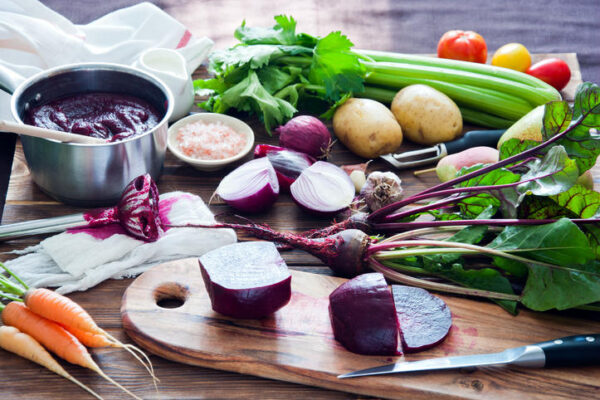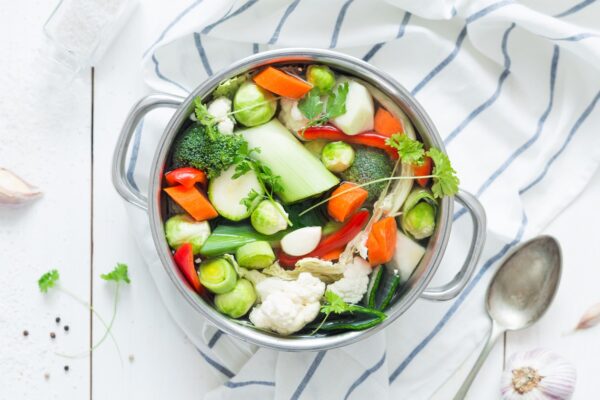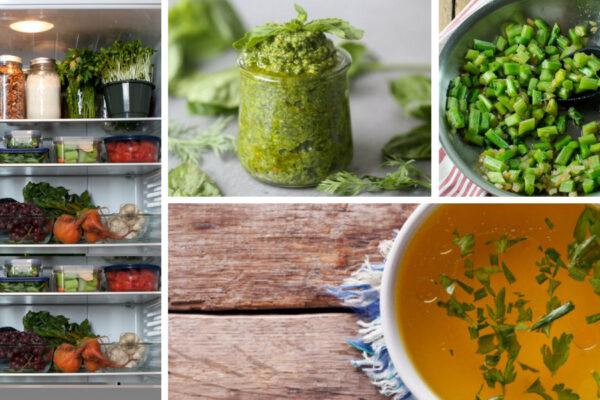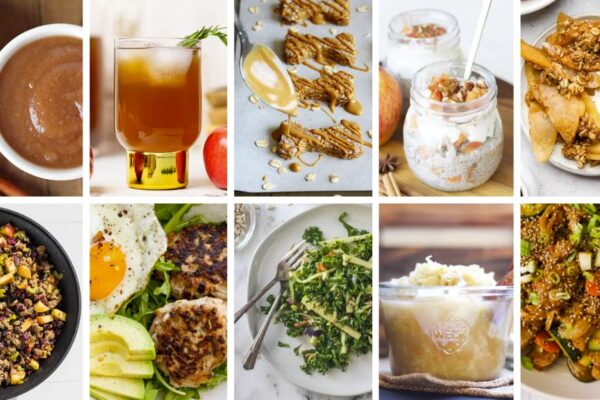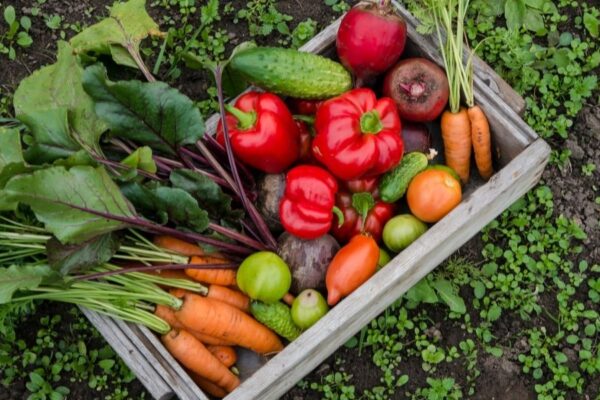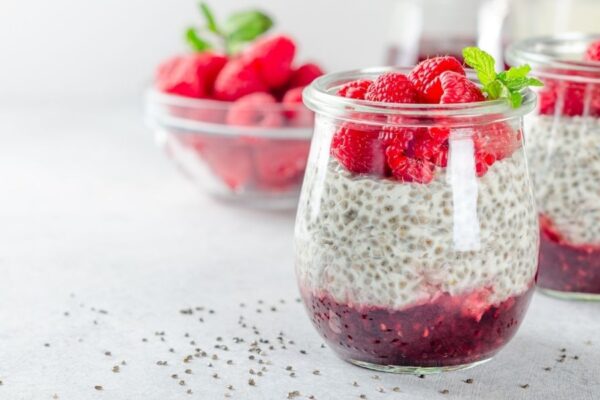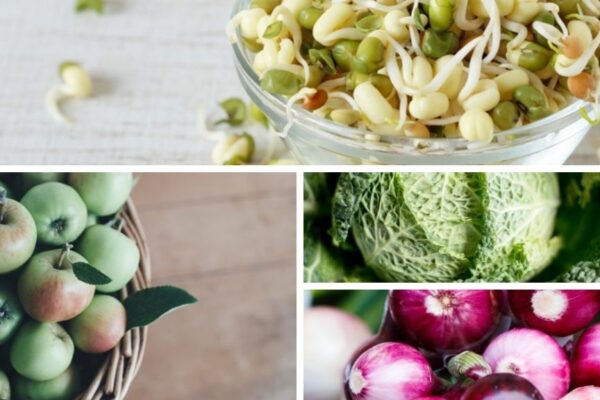How To Make Gummies: Tips and Recipes
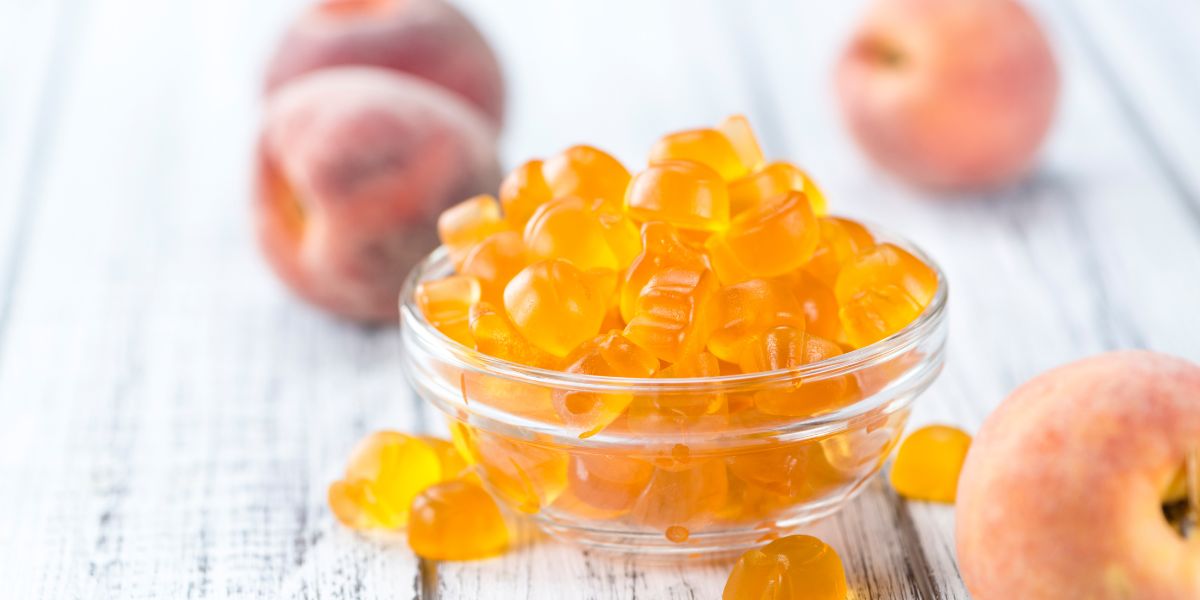
It doesn’t get much easier than a two-ingredient recipe – and it’s incredible how much therapeutic nutrition you can receive from two simple ingredients. Homemade gummies (or homemade gelatin) are delicious, versatile, family-friendly and fun to make and eat. We have a full guide to help you learn how to make gummies. From what kind of gelatin to use, to flavour options, to how to pull off the best consistency, we’ve got you covered.
How to Make Gummies: Best Tips and Recipes
Culinary Nutrition Benefits of Homemade Gummies
Why make your own gummies in the first place?
Many conventional gummy candy brands contain highly refined and processed sugars like glucose syrup, which can negatively impact our health. They have natural and artificial flavours, which in most cases are synthetically produced, as well as food dyes that are associated with cancer and hypersensitivity. Lastly, they typically contain unhealthy or unsustainable oils. Despite their claims of containing ‘real fruit’, most brands are well-removed from any whole food source.
On the other hand, homemade gummies:
- Are nutritive and soothing to the digestive tract, as they are easy to digest and absorb
- Are rich in gelatin, a protein essential to homemade gummies’ health benefits and consistency (more on that below)
- Can be made with pure fruit juices, which have a variety of vitamins, minerals and antioxidants
- Can be amped up with nutritional boosts
As whole fruit juice is naturally sweet on its own, you typically don’t need to add any extra sugar to it, either.
What Is Gelatin: Health Benefits and Why It’s Important for Gummy Recipes
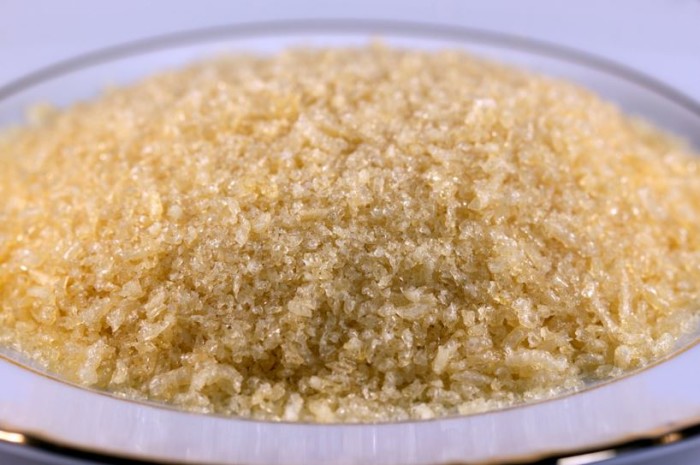
A key ingredient in homemade gummies is gelatin. It helps them ‘gel’, and is also rich in culinary nutrition benefits.
Gelatin is an incredible source of protein, which is vital for:
- healing and repair
- muscle growth
- the production of enzymes and hormones
- immune health
- energy, blood sugar balance and satiety
Gelatin is derived from animal bones. Specific amino acids in animal bones include glycine, glucosamine and chondroitin, which can aid with tissue repair, sleep, mobility and skin health.
Gelatin Vs. Collagen: What’s the Difference?
Gelatin is extracted from collagen – it’s actually a broken-down form of collagen. Gelatin has a shorter chain of amino acids, which is what makes it simpler for us to digest than collagen.
Nutritionally, gelatin and collagen are similar but their consistencies are very different. Collagen completely dissolves in liquid, for example, if you add it to a smoothie or an elixir. Gelatin binds to liquids to form a gelatinous, firm or jiggly texture depending on how much you use.
Curious to learn more about restorative nutrients? The Culinary Nutrition Expert Program has an entire module devoted to Therapeutic Foods, which empowers you to determine key therapeutic foods for yourself, your family or your clients. You’ll learn that with certain foods and specific nutrients, food can play a powerful role in healing, or simply in restoring and maintaining optimal health.
Best Gelatin Brands
Gelatin brands are typically made from either beef or pork. As with any other type of animal product, we recommend sourcing gelatin that comes from organic, grass-fed animals. This yields a gelatin product that is better for your health and the planet.
Some of the gelatin brands we like are:
Visit your local health food store, grocery store, or online shop to see what is available near you. The only ingredient on the label should be ‘beef gelatin’ or ‘pork gelatin’. (These may be written as ‘bovine’ or ‘porcine’).
Can You Make Gummies Vegan?
You can substitute agar-agar powder for gelatin (you’ll need to use 1/8th of the amount of gelatin called for). Note that you won’t receive the health benefits of the gelatin (but there are other benefits to seaweeds like agar).
How to Get The Best Consistency When You Make Gummies
This can be tricky! If you’ve tried homemade gummies before and weren’t happy with the consistency, these tips can help you troubleshoot.
There are three main factors that affect gummy consistency.
The liquid-to-gelatin ratio.
Using more gelatin and less liquid will yield a firmer gummy; less gelatin and more liquid will have a softer consistency.
The amount of pectin in the fruit you’re using.
Pectin is a fibre found in fruits. It also acts as a binder, for example in jam recipes or baking. If you’re using a low-pectin fruit, you may need to add more gelatin if you’re aiming for a thick, candy-like consistency.
Citrus fruits, apples, quinces and plums are some examples of high-pectin fruits; cherries and a number of berries like strawberries and blueberries are low-pectin. Find a full list of pectin fruit amounts here.
The amount of protease enzymes in the fruit that you’re using.
Certain fruits contain protease enzymes. Bromelain (found in pineapple) and papain (found in papaya), are two such kinds of these enzymes. They can be incredibly beneficial for digestion as they help us break down our food.
Unfortunately, they will also break down the gelatin in your gummies, which will prevent them from forming and gelling beautifully.
Fruits that are high in proteases include pineapple, papaya, figs and kiwis.
Do You Need to Sweeten Your Gummies?
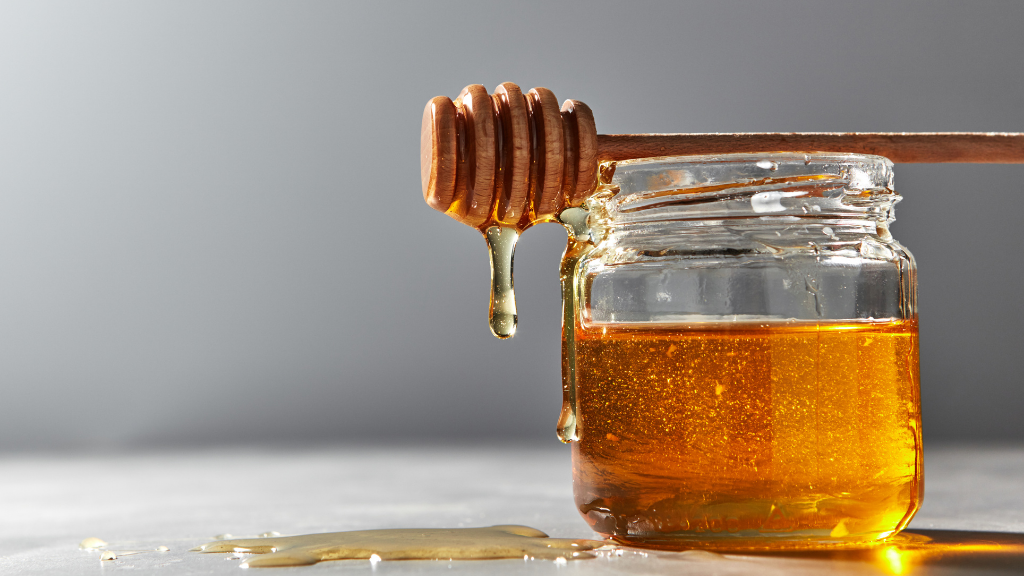
Fruit juices are highly concentrated, so we find we don’t need to add extra sweetener to them to make gummies. However, if you’re using a tart juice or simply for personal preference, you can add a natural sweetener of your choice.
Learn more:
- Guide to Natural Sweeteners
- Guide to Honey
- Monk Fruit and Other Low Carb Sweeteners: Are They Good for You?
Nutrition Enhancers
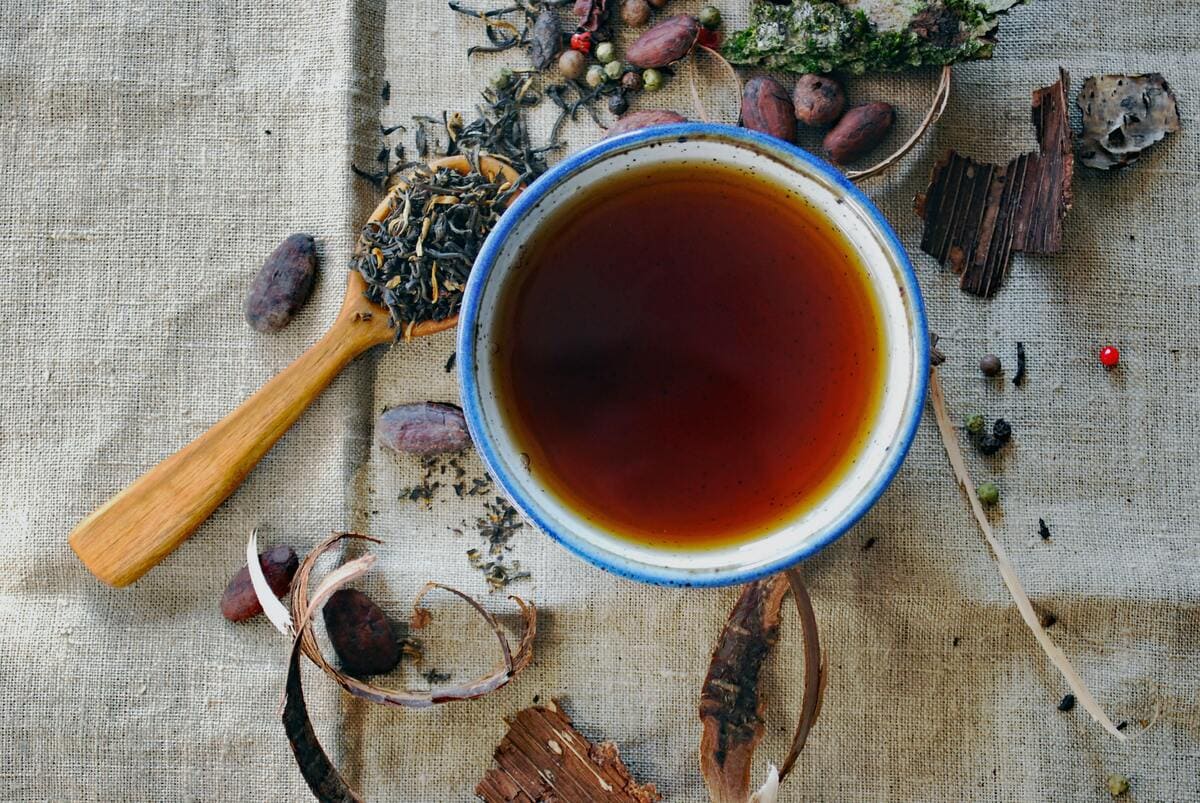
There are a few ways you can pack even more nutrition into your gummy making!
- Add herbal tea
- Stir in collagen powder for additional protein
- Use cinnamon, dried ginger or turmeric for flavour and anti-inflammatory benefit
- Try an adaptogen or mushroom powder
- If using a larger mold, add finely chopped fresh fruit
- Drop in some Vitamin D
- Try CBD oil for homemade CBD gummies
Best Gummy Molds
The best molds to use are the ones you already own! Try:
- Candy molds or chocolate molds
- Silicone muffin trays
- Ice cube trays
- Regular muffin trays lined with paper liners
- A large glass dish or container – then cut gummies into squares or use cookie cutters after they set
The gummy bear shaped molds are adorable, but we aren’t a fan of single-use items unless you know they’ll become a staple tool or appliance in your kitchen.
how to make gummies: Recipes
We have two options for you to try: soft gummies and gummy candy!
Soft Gelatin (Jiggly Gummies)
Print
Blueberry Jelly Squares
- Total Time: 8 minutes
- Yield: 8 servings 1x
Ingredients
- 2 cups blueberry juice, or fruit juice of choice
- 2–3 Tbsp organic, unflavoured gelatin (3 Tbsp for squares, 2 Tbsp for serving in cups or bowls)
Instructions
- Warm the juice in a pot on the stove until warm, but not boiling. You should be able to touch it comfortably.
- Measure out 2-3 Tbsp of gelatin and place in small bowl.
- Transfer juice to a bowl and slowly pour in the gelatin while whisking vigorously to ensure no gelatin clumps form.
- Pour mixture into a 9 inch baking dish or individual molds – however you want to set/serve your jello.
- Place in the fridge for 30-60 minutes or until solid. The larger the mold used, the longer it will take to set.
- Prep Time: 5 minutes
- Cook Time: 3 minutes
Keywords: jello, gelatin, jello squares, gummies, homemade gummies, gummy, blueberry gummies
Firm Gelatin (Gummy Candy)
Print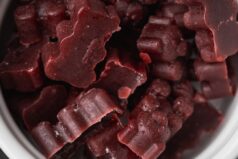
Gummy Candy
- Total Time: 8 minutes
- Yield: 8 servings 1x
Ingredients
- 1 cup pomegranate juice (or juice of choice)
- 3 heaping Tbsp gelatin
Instructions
- Warm the juice in a pot on the stove until warm, but not boiling. You should be able to touch it comfortably.
- 3 Tbsp of gelatin and place in a small bowl.
- Transfer juice to a bowl and slowly pour in the gelatin while whisking vigorously to ensure no gelatin clumps form.
- Pour the juice into a 9-inch baking dish or individual molds.
- Place in the fridge for 30-60 minutes or until solid. The larger the mold used, the longer it will take to set.
- Prep Time: 5 minutes
- Cook Time: 3 minutes
Keywords: gummies, healthy gummies, natural gummies, gummy candy
Free Resource Library
Enjoy more than 40 downloadable guides, recipes, and resources.
















